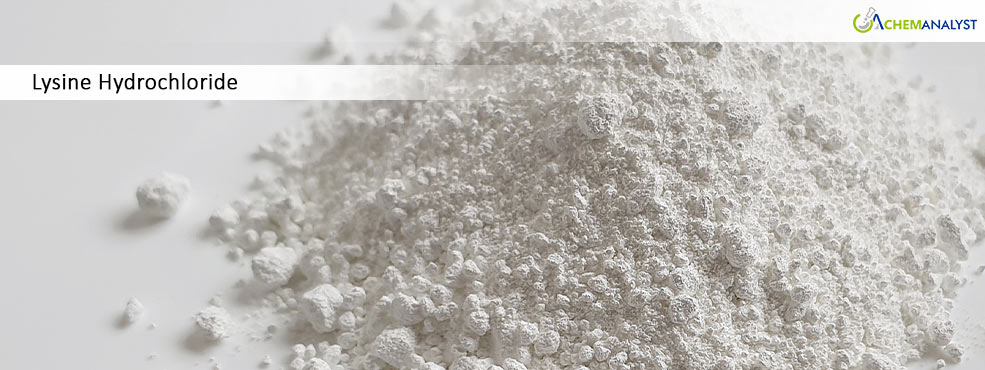Welcome To ChemAnalyst

In the international market, lysine hydrochloride sees a significant contradicting trend between food and feed grade heading towards May 2025. There is a general expectation of a decrease in Feed-grade lysine hydrochloride by traders in the producing and importing countries, but there remains an optimistic trade outlook in the case of food-grade lysine hydrochloride through the month.
On the demand side, Feed-grade lysine hydrochloride, mainly applied as an animal nutrition supplement, is set to follow a declining price trend. This is owing to various reasons such as augmented production capacity from large Asian producers and a recent dip in buying sentiments from major importing countries. Also, enhanced logistics after past disruptions and higher procurements have resulted in improved inventories, which have also augmented the declining trend for lysine hydrochloride since trade is presently aimed at eliminating stocked-up inventories.
Farm projections have shown bumper grain crops, which decrease the demand for artificial amino acids such as lysine hydrochloride in animal feeds. On the other hand, food-grade lysine hydrochloride is set to experience a price increase in May 2025. A high-quality amino acid, food-grade lysine hydrochloride plays a vital role in human nutrition, sports supplements, and pharmaceuticals, and is experiencing increasing demand from health-conscious consumers and a growing nutraceutical industry. This rise, combined with ongoing increases in local quotations and manufacturing difficulties because of high-quality requirements, substantiates ongoing export and import price rises for lysine hydrochloride.
Another aspect supporting this is the recent U.S. tariffs on Chinese-origin animal nutrition additives, such as lysine hydrochloride, which are anticipated to establish diverging price trends. Feed-quality lysine hydrochloride can come under further pressure as customers redirect purchases away from China, towards Southeast Asian producers, in the face of already lofty stocks. In contrast, food-quality lysine hydrochloride is likely to see continued upward momentum by virtue of few non-Chinese suppliers and forward buying by importers who wish to preclude long-term cost inflation.
Overall, the diverging trend in lysine hydrochloride prices mirrors wider trends in the amino acid sector. Importers face both limited availability to increased market supply across the regions thereby impacting the trade dynamics considerably. As a result, various market experts are anticipated to have a watch on these trends closely—some of the players states that feed makers may hold off on bulk purchases, whereas drug and food industries should secure supply with respect to the food sector now to counter potential upward price movements in lysine hydrochloride.
We use cookies to deliver the best possible experience on our website. To learn more, visit our Privacy Policy. By continuing to use this site or by closing this box, you consent to our use of cookies. More info.
